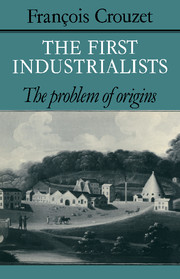6 - From Rags to Riches
Published online by Cambridge University Press: 25 October 2011
Summary
Though at the opposite end of the social hierarchy, the working classes had in common with the gentry the fact that they supplied few industrialists. Only 7% of the individuals included in Table 2 had fathers who were wage-earning manual workers, either skilled or unskilled, or other members of the ‘lower orders’. On the other hand, if we take into consideration the occupations of industrialists before they set up their business (Table 4), 10% of them came from the working class. True enough, this second sample is skewed upwards, because 25 out of 31 men in that position entered the engineering and pottery industries which are special cases, as will be seen later. Likewise, 23% of those industrialists whose first occupation is known (Table 6) had started life as manual wage-earners, but 35 of the 55 men concerned became engineers and potters, so that, if those two industries are excluded, the percentage of those who had worked with their own hands, in their early career, is brought down to 11%. Still, this figure is not negligible and moreover, as both samples include only persons who founded large undertakings, they are biased against the ‘small man’ – against the working class. Anyhow, the index of representation is very low, as the working classes included something like 70 or 75% of the population.
This corroborates Peter Mathias's view: ‘Very few first-generation entrepreneurs sprang from labouring groups – from the humblest levels of society without savings or schooling.’ And it is consistent with the figures put forward by previous writers, except those of J.H. Fox; 16 of his 70 Lancashire entrepreneurs, i.e. 23%, were the sons of working-class men.
- Type
- Chapter
- Information
- The First IndustrialistsThe Problem of Origins, pp. 85 - 98Publisher: Cambridge University PressPrint publication year: 1985



